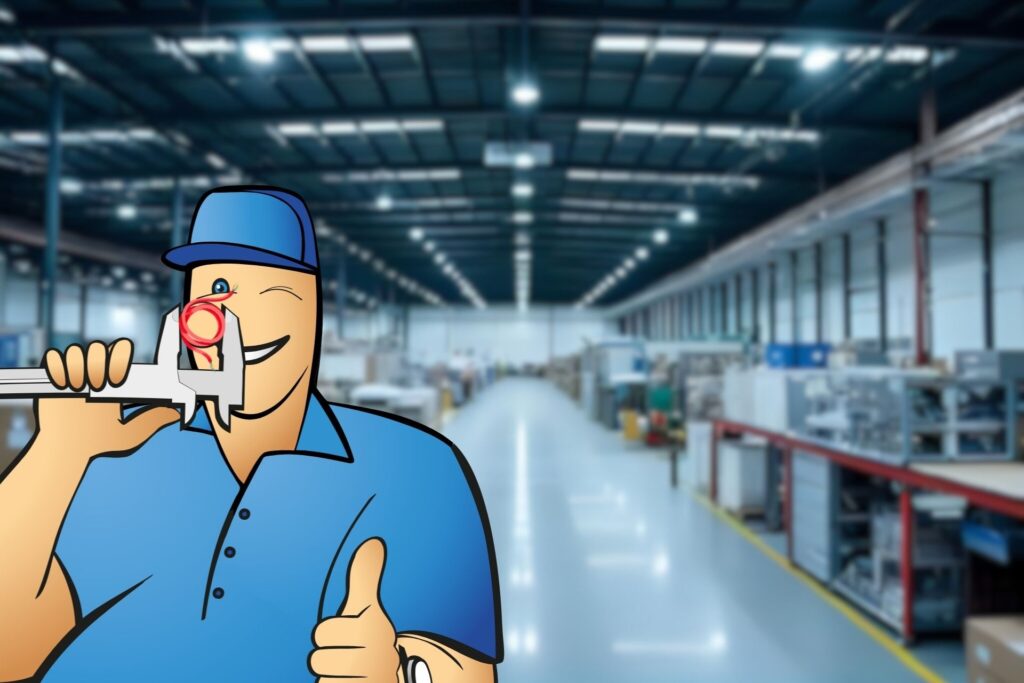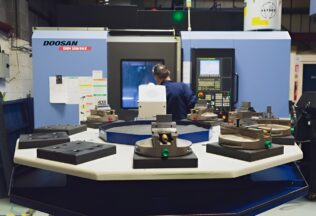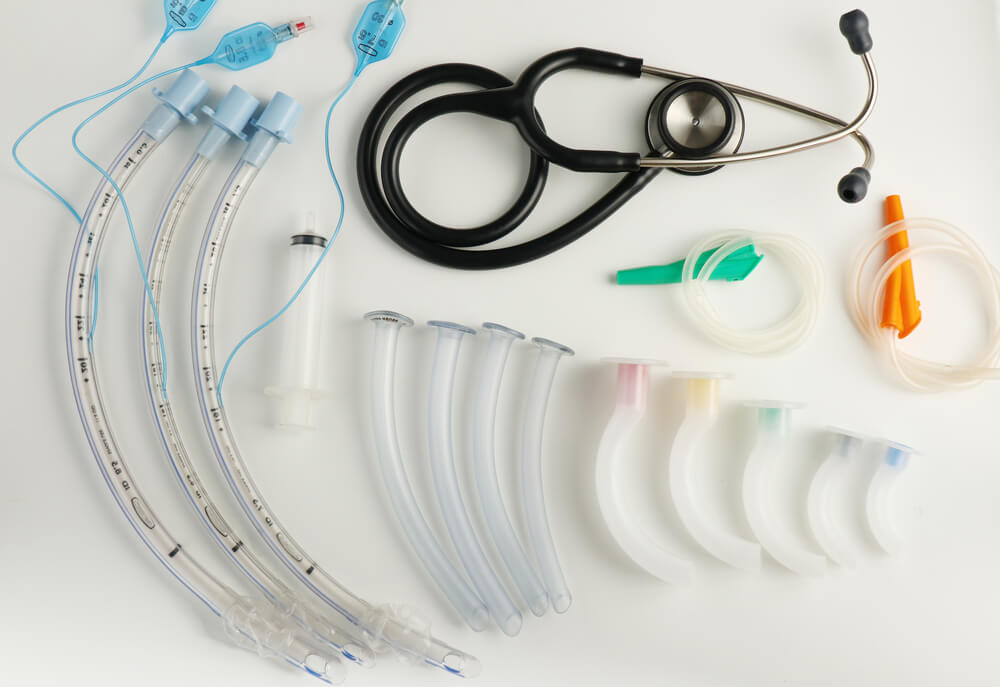Tracking Wire by the Inch: Explosion-Proof LED Maker Levels Up Control
Utah-based premium LED lighting systems manufacturer Technodynamics reached a new level in order, inventory, and cost tracking after implementing manufacturing ERP software. “The more complicated your manufacturing process gets, the more MRPeasy makes sense,” Senior Production Engineer Alfred Neufeld says.

Designing and manufacturing explosion-proof lighting systems
Technodynamics is a premium LED lighting systems manufacturer based in Utah. The company specializes in the design and production of safe lighting solutions for hazardous environments where flammable gases may pose risks of fire or explosion, including oil and gas platforms, aircraft and boat painting, etc.
While the company was started in 2012, its first years of operating were spent on research and development.
“Originally, we were just supposed to design the products—but they got more and more complicated and we wanted to have more control over the whole process,” says Senior Production Engineer Alfred Neufeld, who joined Technodynamics in 2018 as the company started to manufacture its lighting systems at scale.
Rudimentary custom MRP fell out of use
After the departure of an employee who managed much of the company’s supply chain with a homegrown MRP system, Neufeld had to figure out how to manage inventory and purchases on his own. He knew that spreadsheets or other manual methods would just introduce unnecessary complexity, so he decided to find a purpose-built manufacturing software.
“I spent three or four months going through a lot of different solutions,” he says. “But ultimately, MRPeasy covered the bases we needed in the cleanest possible way.”
Production routing and subcontracting functionalities were key
Production routing and subcontracting were some of the functionalities Technodynamics needed that were missing from many other solutions. Along with the bill of materials, the production routing is essential for precisely tracking manufacturing processes and the associated costs. Together with the subcontracting feature, it enables Neufeld to easily manage the production of items that involve a combination of in-house and outsourced manufacturing operations.
“For example, we buy a part from a CNC machine shop and then send it off to be anodized. In a different software system, I would have had to create a separate part number for the anodized item to accommodate the anodizing cost,” he says. “That alone would have quadrupled the amount of work I would have had to do to set up the system.”
Neufeld also liked the fact that MRPeasy is cloud-based, making remote work and collaboration effortless.
“I use the app on my phone to check on things when I’m not at the office,” he says.
Software knowledge paid off in the selection process
Having a degree in electrical engineering and a lot of coding experience in his back pocket, Neufeld found it easy to pull the trigger on the new software. With all the software documentation available on MRPeasy’s website and a no-strings-attached free trial just a click away, he got to dig deep into the solution without having to rely on demos and sales pitches during the decision-making process.
“Experience has shown that I can learn much faster if I can get my hands on the documentation and play around with the software,” he says.
The new system was used from day one
When the decision was made to move from the company’s homegrown MRP system to MRPeasy, Neufeld discovered a major company-wide issue: none of their bills of materials were correct. So, one of the first things he had to do during implementation was to create a new part numbering system.
“Our old system was completely incoherent and inconsistent, so I had to maintain both the old and new systems simultaneously, which added another layer of complexity,” Neufeld maintains. “Thankfully, it was fairly straightforward to handle in MRPeasy. We added a custom field to each item to track the old part number while using the standard part number field for the new system.”
According to Neufeld, entering data into MRPeasy was “as easy as it gets” and the new system went live on its first day of implementation in February 2023, with additional functionality rolled out gradually over a year.
“It was a year of incremental adoption—bringing products and processes into the system as needed, and getting value from it the entire time,” he says about the setup.
Tracking wire by the inch
The new system enabled Neufeld to introduce strict record-keeping discipline in the operation. He set up the BOMs as accurately as possible to account for every piece of material going into the product, which meant that production workers had to report every bit of their material consumption.
“Under the old system, things like odds and ends weren’t counted in the BOMs,” he says. “People assumed small items like an inch of wire didn’t need to be accounted for, but in my opinion, they do.”
Even though the new system required discipline from employees, training the production staff to use it was painless.
“You couldn’t have made it simpler for them—just press play, pause, punch in a number, and you’re done,” Neufeld states. “The only additional thing I had to teach them was how to write off consumable tools like X-acto blades.”
Accurate cost tracking is a key benefit
Having used MRPeasy for two and a half years, Technodynamics has gained substantial advantages from the implementation, starting with accurate cost tracking. With the inaccurate BOMs and the absence of routing functionality in their previous system, tracking the actual cost of products was difficult. Now, a complete overview of production costs is just a few clicks away.
“With MRPeasy, we can go back to a manufacturing order and see a full cost breakdown—exactly which parts were unusually expensive, which routing steps were more labor-intensive, and so on,” Neufeld says. “That level of detail is incredibly valuable.”
Subcontracting was a game-changer
Integrating production routings with subcontracting has made order and cost tracking much more efficient. As the company’s processes are highly complex, grouping various subcontracted operations together with in-house processes enables Neufeld to get a complete overview of manufacturing orders, material consumption, and costs all in one place.
“The subcontracting functionality within a routing is actually quite unique among MRP systems,” he states. “That feature alone was a game-changer for us. It’s accurate, and I don’t have to twist the software to make it reflect what we’re actually doing. The system is already designed to support our real-world processes, and that was a big deal for me.”
Understanding their actual costs also helps Technodynamics with pricing on the engineering side. According to Neufeld, when asked to estimate costs for product development, the answer used to be, “I don’t know—it’s a brand-new product.”
“Now, I can look at similar parts with similar routings and give a ballpark estimate with much more confidence,” he says.
A new level in inventory management and customer service
Having reorder points for stock items has been another great improvement. While the company used to struggle with component stockouts and the resulting production delays, the reorder points now alert them when inventory drops below a critical level.
“MRPeasy helps us stay on top of inventory and ensure things are in stock when we need them,” Neufeld maintains.
The new system has also streamlined communications with customers, providing much-needed structure to the previously unorganized ordering process. Customers can now submit orders directly, and Neufeld can subsequently create the manufacturing order, allocate materials, and track the order progress.
“Clients can see exactly where their order is in the process, when it ships, and even access the tracking number,” he says. “Having all that information available online has been a huge help in strengthening our key partnerships.”
Choosing the right tool for the job
With an engineering background, Neufeld approaches process improvement with a simple but critical mindset: use the right tool for the job.
“You don’t tighten bolts with a hammer. Excel is great for many things, but it’s not designed to document or track a manufacturing process,” he says. “If you’re going to do this properly, you need the right tool—some form of MRP or ERP system is essential.”
Neufeld strongly recommends MRPeasy for manufacturers with complex, multi-step processes. With thousands of part numbers, layered routings, and frequent subcontracted operations, his team needed a system that could handle real-world production complexity without unnecessary overhead.
“We use a lot of advanced features in MRPeasy—subcontracting, routing, custom fields, the whole package,” he explains. “That level of complexity wouldn’t make sense for every business, but for us, it’s exactly what we need.”
The user can determine the complexity of the system
The flexibility of the system is another key argument for choosing MRPeasy, in Neufeld’s opinion. Advanced functionality can be turned on and off in order to provide simplicity to businesses with simple workflows, and the necessary power for those with intricate operations.
“You can turn modules on or off based on what your business actually does and needs,” he says.
In addition to its depth and flexibility, Neufeld highlights MRPeasy’s cloud-based architecture as a key advantage.
“You just open a browser and log in—no server hassles, no installation headaches,” he says.
For businesses facing similar operational demands, Neufeld believes MRPeasy is the obvious choice:
“The more complicated your manufacturing process gets, the more MRPeasy makes sense,” he firmly states.
You might also like: Having Lost $500,000 to SAP, Grow Lamp Manufacturer Turns to MRPeasy




